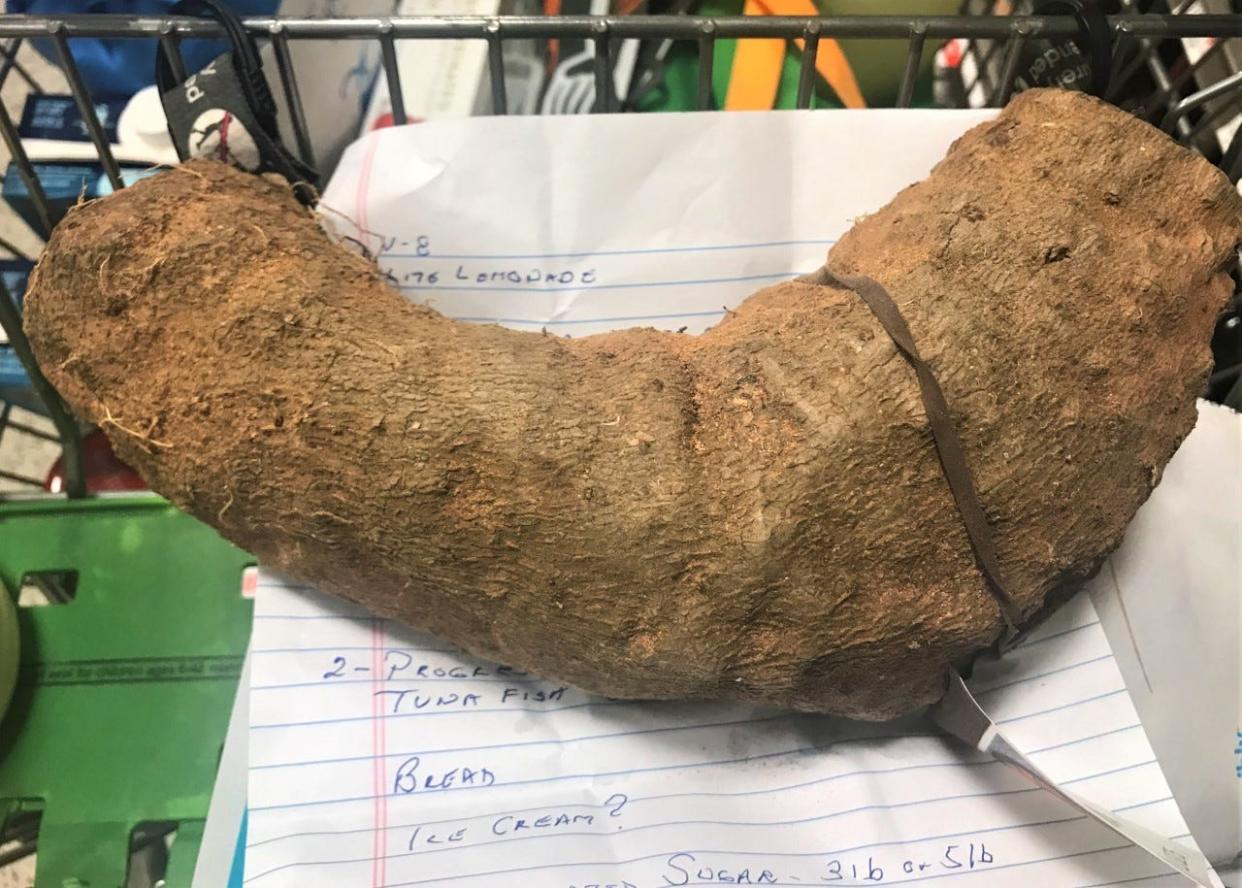This edible tuber has 'roots' in Caribbean nations | Mystery Plant

They don't often let me go to the supermarket unless it’s just to get a newspaper or a bag of ice, because I always end up spending too much time there. Not exactly buying things, but just looking at stuff and reading the labels.
Vegetable juices, imported beer, macaroni, the roasted chickens, sushi, doughnuts in the bakery section, mustard (how many kinds of mustard should there be?), rice, syrup, milk, hot sauce, candy, cosmetics, cereal, beach stuff, dog toys — it goes on and on.
I've come up with a theory that modern grocery stores have two societal functions: satisfying our nutritional and every-day needs, as well as our up-front entertainment requirements. In fact, I'm one of those lucky people who can spend hours looking at the stuff: it's way cheaper than going to a movie, after all. Plus, there’s all that people-watching.
And then, of course, there is the resident produce section. Wow. Locally grown peaches and figs, plantains from Guatemala and strawberries from Chile. Persimmons from the Orient and lychees from Australia. Beautiful fresh fruits and vegetables … too much fun for a botanist. It's like being in a garden. You never know what you might run into on your next trip.
Mystery Plant: Tall, dark green and handsome grass is related to corn
Gardening tips: What to do in the garden in July and August | Marshall
The plant pictured is the edible underground part of a tropical species, one that is a member of the “true” yam family, Dioscoreaceae, not to be confused with the other yam family, the same as the morning-glory family (Convolvulaceae), which gives us sweet potato, often called “yams.” (Yes, sweet potato is related to our morning glories.)
Our Mystery Plant — the “ñame” (pronounced “NYAH-may”) or “Jamaican yam” (Dioscorea cayennensis) — produces high-climbing, thorny vines, native to western and central Africa, places that have a long rainy season. The vines produce attractive dark green, heart-shaped leaves and tiny flowers, both male and female.
This underground part, which can be quite massive, is a tuber — meaning a swollen, food-storage stem, much like an Irish potato. A huge number of these things are grown as a crop and consumed each year in the Caribbean nations, where it is something of a staple, along with other “root” vegetables. It arrived in the New World as a part of the slave trade, and is now commonly consumed worldwide throughout the tropics.
Although the fibrous exterior of the tuber is brown (and fibrous), the interior is smooth, and pale yellow. Nutritionists tell us that these have a very high starch content, and so probably wouldn't be very good for a low-carb diet.
Nevertheless, they are full of vitamins and minerals, quite nutritious as a peeled, cooked vegetable, and definitely worth a try, sauteed, baked, boiled or steamed. It's versatile by itself or as a component of savory stews or turned into fritters. If you want to be adventurous and try one, be sure that you cook it thoroughly. The raw flesh contains a lot of little crystals which can be irritating.
For more information, here’s a link to an online free-to-use information database and associated website for those interested in edible and useful plants pfaf.org.

John Nelson is the retired curator of the A.C. Moore Herbarium at the University of South Carolina in Columbia, S.C. As a public service, the Herbarium offers free plant identifications. For more information, visit www.herbarium.org or email johnbnelson@sc.rr.com.
This article originally appeared on Tallahassee Democrat: Ñame or Jamaican yam a staple throughout the tropics

